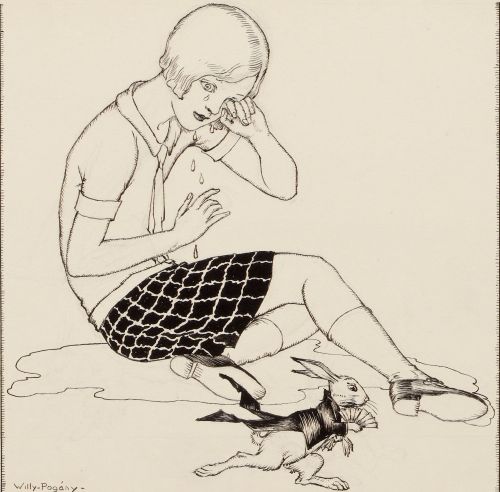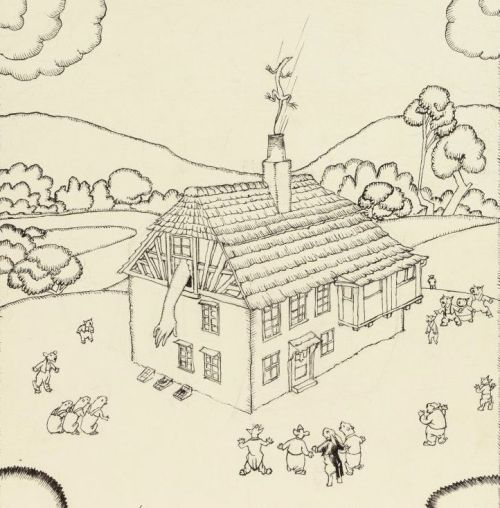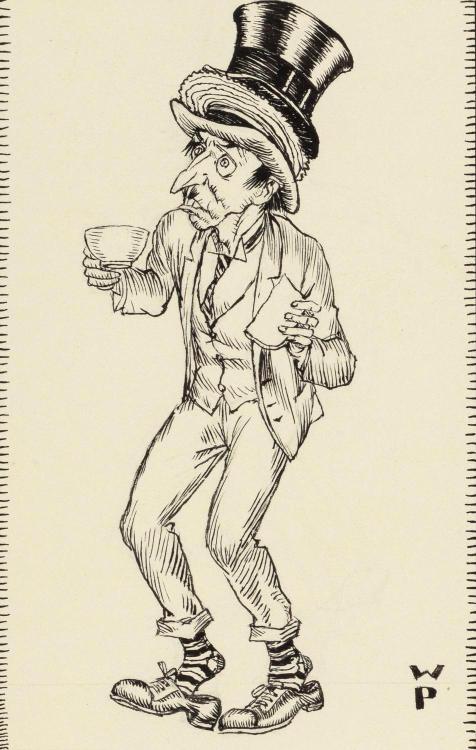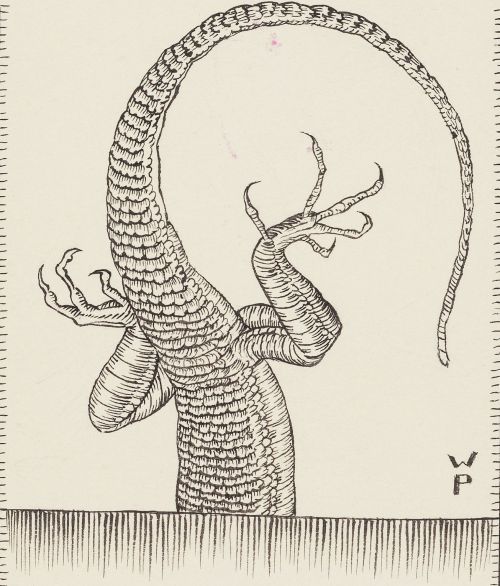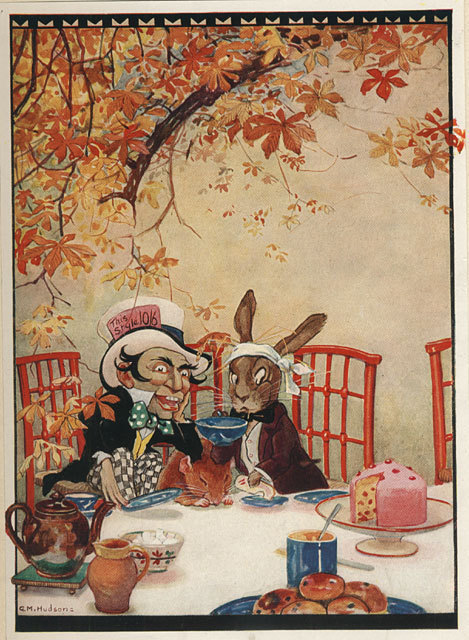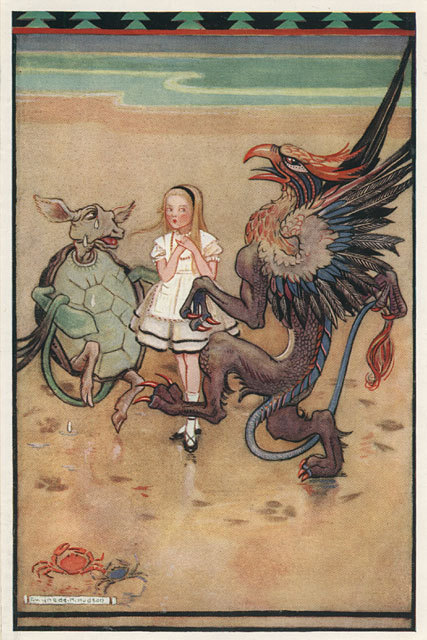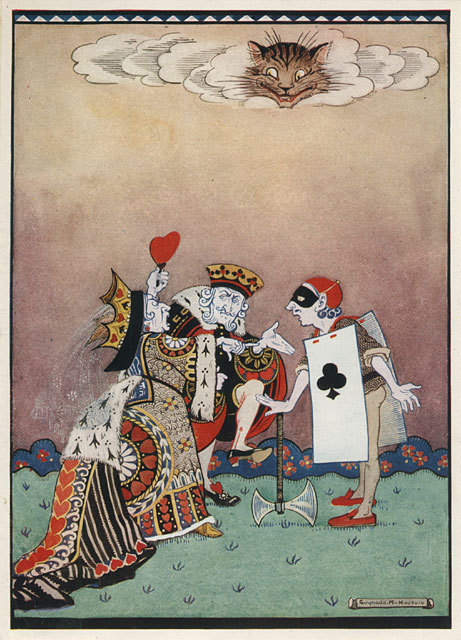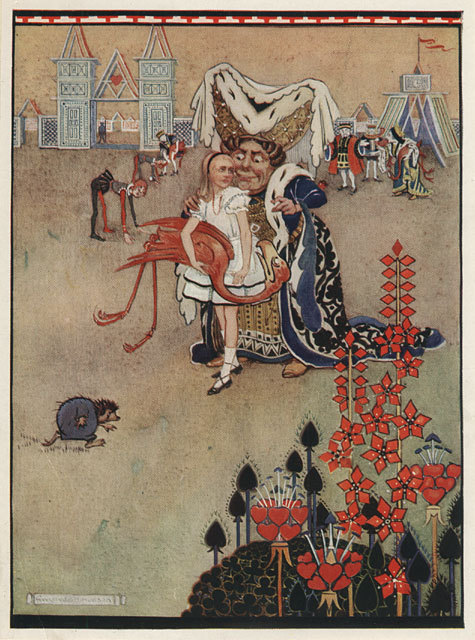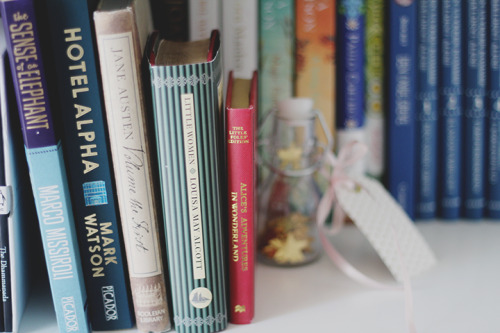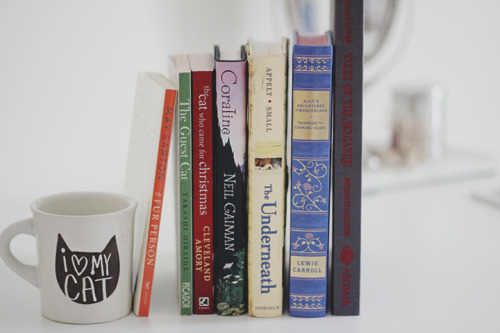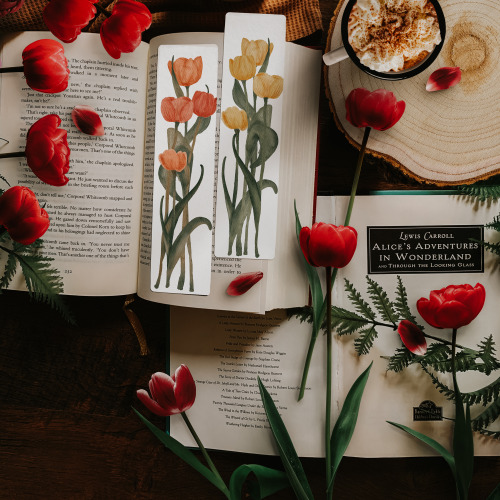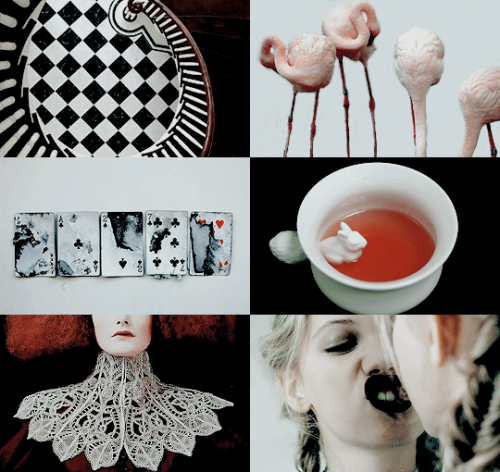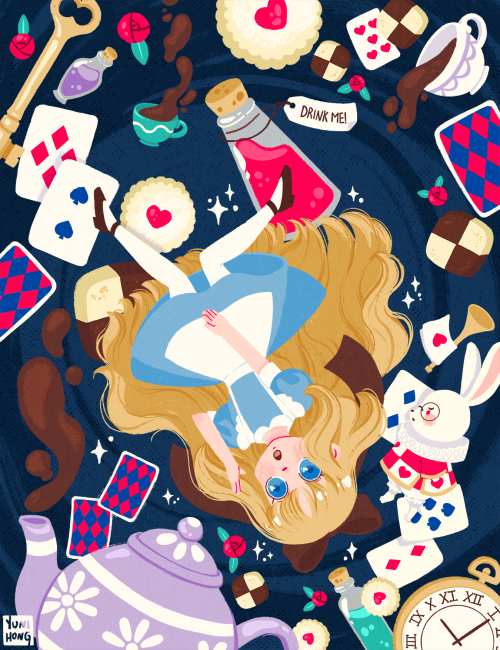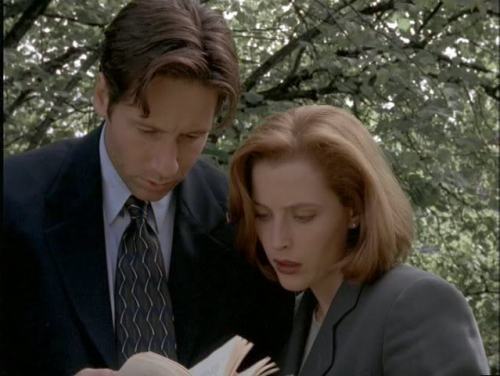#alices adventures in wonderland
Haven’t really been able to work on personal stuff, but I had to redesign book covers for one of my classes



I’m not entirely happy with them, but I like them when I take into account the time crunch and pressure I’m under right now, haha.
(text on back mostly taken from Wikipedia, fonts used are Flowerchild and Brandon Bromley (found on dafont.com) and Avenir. all artwork done by me)
These are all my finished sidewalk chalk art I’ve done this year. They’re all mostly just practice to get everything flowing before the chalk fest. I may not have any finger tips left but chalk festival here I come!
“A Caucus Race And A Long Tale,” illustration from Lewis Carroll’s Alice’s Adventures In Wonderland by John Tenniel, 1865
Post link

Inktober Día 23 -La casa del conejo
Antes de haberse acabado la mitad de la botella, se encontró con que su cabeza se apretujaba contra el techo, y tuvo que torcerla para no romperse el cuello. Se apresuró a dejar la botella, diciendo: «Ya es más que suficiente—Espero no seguir creciendo—Ya así como estoy, no puedo salir por la puerta—¡Ojalá no hubiera tomado tanto!»
Look at this lovely photograph taken by Lexi, one of my brand reps; https://www.instagram.com/lexigagan/
Miniature frames, including this Alice In Wonderland one, can be found in my Etsy shop!
Post link
Join us down the rabbit hole. We’re bringing some of the world’s most incredible stories to Instagram Stories with Insta Novels. Follow @nypl on Instagram to start reading Alice’s Adventures in Wonderland: https://www.instagram.com/nypl/.
Find all of the ways to discover these stories at https://www.nypl.org/instanovels.
Alice May: The Complete List
Here are all the overviews I’ve written of Alice’s Adventures in WonderlandandThrough the Looking-Glass adaptations throughout the month of May.
I haven’t included the Tim Burton duology, because they’re sequels to the original story, not adaptations.
*Alice in Wonderland (1915 silent film) – Alice played by Viola Savoy
*Alice in Wonderland (1931 Metropolitan Studios film) – Alice played by Ruth Gilbert
*Alice in Wonderland (1933 Paramount Pictures film) – Alice played by Charlotte Henry
*Alice in Wonderland (1949 British-French film) – Alice played by Carol Marsh
*Alice in Wonderland (1951 Disney animated film) – Alice voiced by Kathryn Beaumont
*Alice in Wonderland (1966 BBC TV film) – Alice played by Anne-Marie Mallik
*Alice in Wonderland, or What’s a Nice Kid Like You Doing in a Place Like This? (1966 Hanna-Barbera animation) – Alice voiced by Janet Waldo
*Alice Through the Looking Glass (1966 NBC TV musical) – Alice played by Judi Rolin
*Alice’s Adventures in Wonderland (1972 British film) – Alice played by Fiona Fullerton
*Alice Through the Looking-Glass (1973 BBC TV film) – Alice played by Sarah Sutton
*Alice at the Palace (1981 filmed stage musical) – Alice played by Meryl Streep
*Alisa v Strane Chudes (“Alice in Wonderland”) (1981 Russian animated film) – Alice voiced by Marina Neyolova
*Alisa v Zazerkal (“Alice Through the Looking-Glass”) (1982 Russian animated film) – Alice voiced by Marina Neyolova
*Alice in Wonderland (1983 filmed Broadway production) – Alice played by Kate Burton
*Alice in Wonderland (1985 two-part CBS TV film) – Alice played by Natalie Gregory
*Alice in Wonderland (1985 Anglia Television 5 miniseries) – Alice played by Giselle Andrews
*Alice in Wonderland (1986 BBC miniseries) – Alice played by Kate Dorning
*Alice Through the Looking Glass (1987 Burbank Films animation) – Alice voiced by Janet Waldo
*Alice in Wonderland (1988 Burbank Films animation) – Alice voiced by Olivia Martin
*Něco z Alenky (“Something from Alice”) (1988 Czech film) – Alice played by Kristýna Kohoutová
*Alice in Wonderland (1995 Jetlag Productions animation) – Alice voiced by Bailee Reid
*Alice Through the Looking Glass (1988 British Film) – Alice played by Kate Beckinsale
*Alice in Wonderland (1999 NBC TV film) – Alice played by Tina Majorino
*Alice in Wonderland (2007 opera by Unsuk Chin) – Alice played by Sally Matthews
*Alice’s Adventures in Wonderland (2011 ballet by Joby Talbot) – Alice played by Lauren Cuthbertson
@ariel-seagull-wings,@superkingofpriderock,@faintingheroine,@the-blue-fairie,@amalthea9
I’ve lost count of the number of older works of fiction that some people refuse to take at face value. So many literary critics, when faced with an aspect of a classic book or play that they don’t like, will claim that it’s really a deconstruction or a satire, or that the author didn’t really want to write it that way, but reluctantly gave in to the mores of their time period. Whether it’s because the work is out of step with modern values, or because the tone is inconsistent, or because certain storylines play out differently than the critic wanted them to, or, very commonly, because the work is too romantic, too optimistic, etc., and not edgy and cynical enough, the critics cry “insincere author.”
We see this when people claim that Romeo and Juliet is really a satire or a deconstruction of a love story. Or when they claim that the ending of Wuthering Heights inconsistent with the rest of the book, and probably wasn’t the original ending Emily Brontë wrote, or that Jane Eyre’s happy ending is supposed to ring false and hollow. Or that the ending of Little Women is another false happy ending that’s actually supposed to be disappointing. Or many other examples.
Now I’ve seen this thinking applied to Alice in Wonderland too. Namely to the sentimental poems and gentle real-world scenes that frame both of the two books: the poem “All in the golden afternoon” that opens Alice’s Adventures in Wonderland and the reverie of Alice’s sister that ends the book, and Through the Looking-Glass’s framing poems “Child of the pure unclouded brow” and “A boat beneath a sunny sky” and its opening and closing scenes of Alice playing with her kitten.
I’ve now seen two people (composer Unsuk Chin in her notes on her opera adaptation, and an essay writer whose name I’ve forgotten) argue that these poems and scenes are tonally inconsistent with the rest of the text, and that they’re much more conventionally Victorian in their sentimentality and idyllic portrait of childhood than Alice’s dream adventures are in all their surrealism, humor, dark edges and cultural satire. Unsuk Chin wrote that Carroll was probably forced to give the books a conventional, sentimental framing, or else they would have been too radical for the era, and she suggested that he probably would have written very different opening and closing scenes if he had his own way. I also found an essay targeting the opening and closing poems, which suggested that they should be read as satirical, because their sentimental tone and their framing of the stories as simple, wondrous fairy tales for innocent children is so out-of-step with the books’ actual tone.
That’s an interesting idea that I had never considered before. I always have noticed that difference in tone between Alice’s adventures and the framing poems and scenes. But I’ve still always assumed that the framing sentimentality was sincere on Carroll’s part, and that this was part of the books’ complexity. The idea that it might really be satire never crossed my mind until now.
But to be honest, I still lean toward thinking they’re sincere. In the first place, Carroll’s satirical poems within Alice’s dreams (e.g. “How doth the little crocodile” and “You are old, Father William”) are obviously satire. Gleeful, wicked satire of the popular moralizing poems of the day. Not poems so subtly satirical that most people would think they were straight examples of the sentimental Victorian verses they parody. Secondly, in 1887, Carroll wrote an article called “Alice on the Stage,” in which he gave detailed descriptions of each of the book’s characters and what he thought of their portrayals in a recent stage adaptation. His description of Alice herself is very similar in tone to the framing poems and the affectionate reverie of the older sister at the end of the first book. He waxes very sentimentally about her loving, gentle, courteous nature, and of the innocence, joy, and wonderment of childhood that she embodies. Again, there’s a bit of a disconnect between the angel-child he describes and the character he actually wrote – is this girl, “loving as a dog and gentle as a fawn,” the same one who kicked Bill the Lizard out of the chimney and who remarked “I don’t think it’s a pity at all” when told that the Duchess was sentenced to death? But unless he meant this article as satire too, I can’t imagine after reading it that the books’ openings and endings are insincere in their tenderness.
Besides, as I pointed out, commentators are always trying to explain away aspects of classic literature that they don’t like by saying “It was meant as satire” or “The author was forced to write this by the mores of the time period.”
Still, the idea that the sentimental poems and framing scenes might have been meant as satire, or that they might have been concessions to Victorian taste so the books wouldn’t seem too radical, is worthwhile to consider. They are very different in tone from the surreal and satirical stories they frame, after all. I might personally view that difference as just a part of the books’ complexity (and as reflecting the complex, enigmatic character of the man who wrote them), but it’s worth exploring from every possible angle.
The tulips are blooming here and I just can’t get enough of them. These watercolor tulips and other spring-inspired bookmarks will be in the shop soon!
Post link
Fox Mulder & Dana Scully of The X-Files readingAlice’s Adventures In Wonderland by Lewis Carroll
Post link









Alice in Wonderland aesthetic
The gifts i’ve gotten will help me with making ocs so stay tuned for more content as far as ocs go! Well concepts anyways lol
To specify I got the entirety of the books associated with the land of Oz, the Lisi Harrison MH books, and a combo book of both Alice stories
So yeh, I made it my dust to tackle the remaining Wonderlandians and some of the wizard of Oz stuff ^^ the MH books are purely self-indulgent and I just wanted to finish my collection lol


